Papers by Daniel Cavallari
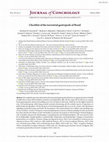
Journal of Conchology, 2024
We compiled taxonomic information about terrestrial gastropods in Brazil in an organized and user... more We compiled taxonomic information about terrestrial gastropods in Brazil in an organized and user-friendly checklist that we hope will be useful for researchers and stakeholders alike. We also expect that it will serve as a springboard, garnering more interest and enabling a new wave of studies on this fauna, which has one the highest extinction rates of all animal groups while being essential ecosystem functioning and also includes species of importance to public health and agriculture. We list all species of terrestrial gastropods that occur in the country, with information regarding synonymized names and fossils. We also propose a few nomenclatural acts to address some pending issues of easy resolution. A total of 748 species of terrestrial gastropods are known in Brazil, including 33 exotic species that have been introduced to Brazil. A total of 48 families are present, the majority of which belong to Stylommatophora; only six families represent the Neritimorpha, Caenogastropoda and Systellommatophora. The most speciose families are Bulimulidae, Strophocheilidae, Cyclodontinidae, Streptaxidae, and Simpulopsidae. Changes in nomenclature proposed here are as follows: Drymaeus obliquus poecilogramma Ancey, 1901 is now reclassified as Sanniostracus poecilogramma (Ancey, 1901) comb. nov.; Helix uniplicata Férussac, 1827 as Clessinia uniplicata (Férussac, 1827) comb. nov.; Zonitoides parana Baker, 1914 as Miradiscops parana (Baker, 1914) comb. nov.; “Helix” circumplexa Deshayes, 1839 as Systrophiella circumplexa (Deshayes, 1839) comb. nov.; Bradybaena giovannalimae Lima & Cossignani, 2021 as Streptaxis giovannalimae (Lima & Cossignani, 2021) comb. nov.

Zoologia, Dec 31, 2022
The expression ‘you need to know to conserve’ is a well-known cliche among biologists. Documentin... more The expression ‘you need to know to conserve’ is a well-known cliche among biologists. Documenting the richness of a group of organisms is the first step towards understanding biodiversity and preparing efficient conservation plans. In this context, many efforts have been made to quantify the number of species on Earth and estimate the number of species still unknown to science. A few countries have complete and integrated databases estimating the approximate number of species recorded for their territory, particularly in the Global South. In Brazil, a country of continental dimensions, revealing the richness of the second most diverse clade of invertebrates (=Mollusca) has been a goal of taxonomists. Recently, in an unprecedented, collective, and integrated effort among Brazilian malacologists, it was possible to estimate how many valid species of molluscs are there in Brazil. In this effort, more than 30 mollusc experts joined together to update the Taxonomic Catalogue of the Brazilian Fauna (TCBF), a governmental website that allows a quick and real-time updating of all Metazoan. So far, more than 5,000 updates have been made in TCBF, indicating the presence of 3,552 valid species of molluscs in Brazil, distributed among the main clades as follows: Caudofoveata (10 spp.), Solenogastres (6 spp.), Polyplacophora (35 spp.), Scaphopoda (43 spp.), Cephalopoda (92 spp.), Bivalvia (629 spp.) and Gastropoda (2,737 spp.). The present study, in addition to demonstrating for the first time the richness of Brazilian molluscs, also presents the state of the art of this important phylum of invertebrates highlighting its most representative and neglected groups.
Biodiversity Information Science and Standards, Jun 13, 2018
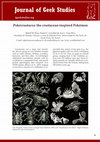
Zenodo (CERN European Organization for Nuclear Research), Aug 20, 2020
Crustaceans are a large and incredibly diverse group of very familiar animals such as crabs, lobs... more Crustaceans are a large and incredibly diverse group of very familiar animals such as crabs, lobsters, shrimps, woodlice, barnacles, and their allies. As full-fledged arthropods (invertebrate animals with an exoskeleton, a segmented body, and paired jointed appendages), they comprise over 70,000 species (Brusca et al., 2016) ranging in size from a fraction of a millimeter to respectable few meters of leg span (e.g., the Japanese spider crab can reach a whopping 3.8 m or 12.5 ft). They are quite an ancient group, ranging back to the Cambrian period some 511 million years ago. Some existing animals are virtually identical to fossilized forms from the Triassic, dating back 200 million years ago. Left: Decapods, from German zoologist Ernst Haeckel's 1904 work "Kunstformen der Natur". Right: Pokémon inspired by real-world decapods.
Zenodo (CERN European Organization for Nuclear Research), Feb 6, 2021
Survival Evolved 1 is a survival game, as one could expect by its title. It was developed by Stud... more Survival Evolved 1 is a survival game, as one could expect by its title. It was developed by Studio Wildcard, in collaboration with three other studios, and was launched in its finished form in August 2017. Back then, the game was available on Xbox One, PlayStation 4, and the usual computer operating systems. ARK was later released for Android, iOS, and the Nintendo Switch.
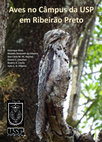
O livro que estão prestes a conhecer é exatamente sobre a possibilidade de ver, ouvir e principal... more O livro que estão prestes a conhecer é exatamente sobre a possibilidade de ver, ouvir e principalmente reconhecer um conjunto expressivo de aves, de 203 espécies, pertencentes a 56 famílias, fotografadas no câmpus ou arredores, desde há aproximadamente 20 anos. Aves no Câmpus da USP em Ribeirão Preto é um guia fotográfico, de autoria de especialistas. As imagens de alta qualidade gráfica foram fornecidas pelos autores e por vários colaboradores, fotógrafos profissionais ou amadores e comprovam a exuberância da avifauna brasileira, uma entre as três mais diversas do mundo, presente mesmo em um município com poucas áreas de vegetação natural. Dados sobre a taxonomia, incluindo os nomes (popular e científico), os ambientes de ocorrência, o tipo de alimentação, e frequência de observação, entre outros, são acessíveis em linguagem clara e precisa. São fornecidos links e, com recursos da internet, é possível escutar o canto das aves catalogadas.
Biota Neotropica
Samples of terrestrial gastropods were collected year-round in seven caves in Presidente Olegário... more Samples of terrestrial gastropods were collected year-round in seven caves in Presidente Olegário municipality, Minas Gerais state, southeastern Brazil, during several expeditions from 2012 to 2014. Twenty-four taxa (plus a single freshwater species), mainly stylommatophorans, were found in the material. The following species are reported for the first time for Minas Gerais state:
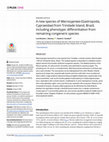
PLOS ONE, 2020
Macrocypraea mammoth is a new species from Trindade, a remote oceanic island located 1160 km off ... more Macrocypraea mammoth is a new species from Trindade, a remote oceanic island located 1160 km off Espírito Santo, Brazil. This isolated species is described in a detailed morphological scenario that includes all Recent congeneric species. The detailed anatomy of two Recent species, M. zebra and M. cervinetta, were described in a previous paper. The remaining one, M. cervus, is included herein. Brief taxonomical comments on all these species is also included. The new species can be distinguished from other Western Atlantic species by its larger size, proportionally heavier and more solid shell, more rounded and wider outline, longer posterior tapered ending and slightly inflated base; anatomically it has some exclusivities, such as the mantle papillae mostly bearing 3-5 distal aligned projections, osphradium with a shorter branch, modifications in some odontophore muscles, penis with a clear glandular region, and a sac-like bursa copulatrix with a long duct. Based on the comparative analysis, the genus Macrocypraea can be defined by the wide distance between the osphradium and gill; a twofold buccal muscle (mc); a radular ventral tensor muscle (pair m11) surrounding radular sac; and a bursa copulatrix located at middle level of the pallial oviduct. Register ZooBank: urn:lsid:zoobank.org:pub:C8E6E515-508F-47DE-9753-4EA619C1DDFD.
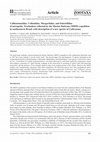
The deep-water mollusks collected during the Marion Dufresne (MD55) expedition to the southeaster... more The deep-water mollusks collected during the Marion Dufresne (MD55) expedition to the southeastern Brazilian coast in 1987 have been studied in several recent works. The present paper lists and diagnoses 19 species belonging to the vetigastropod families Calliostomatidae, Colloniidae, Margaritidae, and Solariellidae. A new species, Calliostoma valkuri sp. nov., is described. It is mainly characterized by a very short teleoconch I, with limits marked by conspicuous varices and sculpture consisting of 3 spiral threads; sculpture of the teleoconch II consisting of spiral cords with thorn-like projections; and the presence of two strongly marked cords on the median portion of the whorls. Based on the MD55 samples and complementary specimens from other expeditions, the following species have their geographical and/or bathymetrical range extended: Bathymophila euspira, Calliostoma gemmosum, Calliostoma rude, Callogaza watsoni, Gaza compta, Falsimargarita terespira, Homalopoma boffii, Lame...
Zoosystematics and Evolution, 2020
The genus Habeastrum Simone, 2019 was recently described based on empty shells, counting with two... more The genus Habeastrum Simone, 2019 was recently described based on empty shells, counting with two troglobite species. Conchological features allowed a preliminary classification in the caenogastropod family Diplommatinidae, but this family allocation was left open to future studies. Herein, we present a detailed anatomical study of newly acquired specimens, confirming the classification in Diplommatinidae. These new specimens, from Minas Gerais state, SE Brazil, belong to a new troglobite species described herein, Habeastrum strangeisp. nov. The present records extend the genus distribution ca. 1,100 km east-northeast.
Zootaxa, 2018
In the present study, Calliostoma melliferum sp. nov. is described from Canopus Bank, a seamount ... more In the present study, Calliostoma melliferum sp. nov. is described from Canopus Bank, a seamount located ~190 km off Fortaleza, Ceará, northeastern Brazil, at depths of 60–260 m. Shell morphology and anatomy of the soft parts are analyzed in detail with the aid of SEM and micro-computed tomography (CT-Scan) techniques. We take the opportunity to provide thorough conchological and anatomical comparisons with similar species from the Southwestern Atlantic.
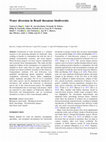
Ambio, 2019
Construction of water diversions is a common response to the increasing demands for freshwater, o... more Construction of water diversions is a common response to the increasing demands for freshwater, often resulting in benefits to communities but with the risk of multiple environmental, economic, and social impacts. Water-diversion projects can favor massive introductions and accelerate biotic homogenization. This study provides empirical evidence on the consequences of a proposed law intended to divert water from two large and historically isolated river basins in Brazil: Tocantins to São Francisco. Compositional similarity (CS) and b-diversity were quantified encompassing aquatic organisms: mollusks, zooplankton, crustaceans, insects, fishes, amphibians, reptiles, mammals, and plants. For CS we (i) considered only native species, and (ii) simulated the introduction of non-natives and assumed the extinction of threatened species due to this water-diversion project. We highlight the environmental risks of such large-scale projects, which are expected to cause impacts on biodiversity linked to bioinvasion and homogenization, and we recommend alternatives in order to solve water-demand conflicts. Keywords Animal conservation Á Biological conservation Á Biological invasions Á Biotic interchange Á Environmental impacts Á Inter-basin water transfer Electronic supplementary material The online version of this article (

Archiv für Molluskenkunde International Journal of Malacology, 2016
A list of Brazilian terrestrial and freshwater gastropod species and genera described from 2006 t... more A list of Brazilian terrestrial and freshwater gastropod species and genera described from 2006 to 2016 is presented, updating the previous catalogue of simone (2006). Colored photographs of type specimens, as well as information on type material, distribution and taxonomy are also provided. The list encompasses 42 recently described species, largely pulmonates, including 39 terrestrial, and three freshwater taxa. New genera are: Syneancylus gutiérrez gregoriC 2014; Cli-nispira simone & Casati 2013; Habeas simone 2013; Kora simone 2012; Olympus simone 2010; Spiripockia simone 2012 and Vegrandinia salvador, Cunha & simone 2013. The appendix lists native species whose known geographical ranges in Brazil have been extended considerably during this period, as well as those previously unrecognized in Brazil.
Zootaxa, 2016
Architectonicidae is a diverse family of heterobranch sea snails comprising over 11 genera and 14... more Architectonicidae is a diverse family of heterobranch sea snails comprising over 11 genera and 140 extant species distributed worldwide (Bieler & Petit, 2005). They live in shallow to deep water, and have turbinate to discoidal shells, with a typically wide umbilicus and a downward-pointing (heterostrophic) protoconch (Healy, 1998). Pseudotorinia phorcysi Cavallari, Salvador & Simone, 2013 is a deep-water species known only from its type locality in the SW Atlantic, off Cabo Frio, Rio de Janeiro state, Brazil (23°41'S 42°06'W, 430–450 m depth). Its original description was based on a single eroded juvenile specimen collected by the French-Brazilian expedition “Marion Dufresne” MD55 in the late 1980s (Cavallari et al., 2014).
Zootaxa, 2016
Solariellidae is a diverse family of small (5–20 mm) marine snails of worldwide distribution. The... more Solariellidae is a diverse family of small (5–20 mm) marine snails of worldwide distribution. They usually live on fine sediment to unconsolidated substrates in deep-waters of extra-tropical to tropical latitudes (Hickman 1998; Williams et al. 2013). Initially described as a subfamily of Trochidae, it has been recently raised to family level (Bouchet et al. 2005; Williams et al. 2008). The evolutionary relationships among solariellids have been extensively investigated in the light of morphological and molecular data, but the family still lacks a comprehensive taxonomic revision that reflects recent discoveries (Williams et al. 2010, 2013). The family’s fossil record possibly dates back to the Campanian of Torallola, Spain (Kiel & Bandel 2001; Williams et al. 2013).
European Journal of Taxonomy, 2016
study on the Architectonicidae collected by the Marion Dufresne (MD55) expedition to SE Brazil (G... more study on the Architectonicidae collected by the Marion Dufresne (MD55) expedition to SE Brazil (Gastropoda, Heterobranchia). Spixiana 37 (1): 35-43. Some of the deep-water molluscs collected during the Marion Dufresne (MD55) expedition off SE Brazil have been studied in recent papers. The present work focuses on the heterobranch family Architectonicidae. Four species have their occurrence expanded to/in the SW Atlantic (new records in parenthesis):









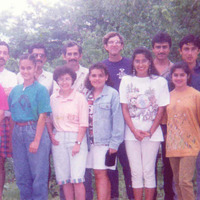

Uploads
Papers by Daniel Cavallari